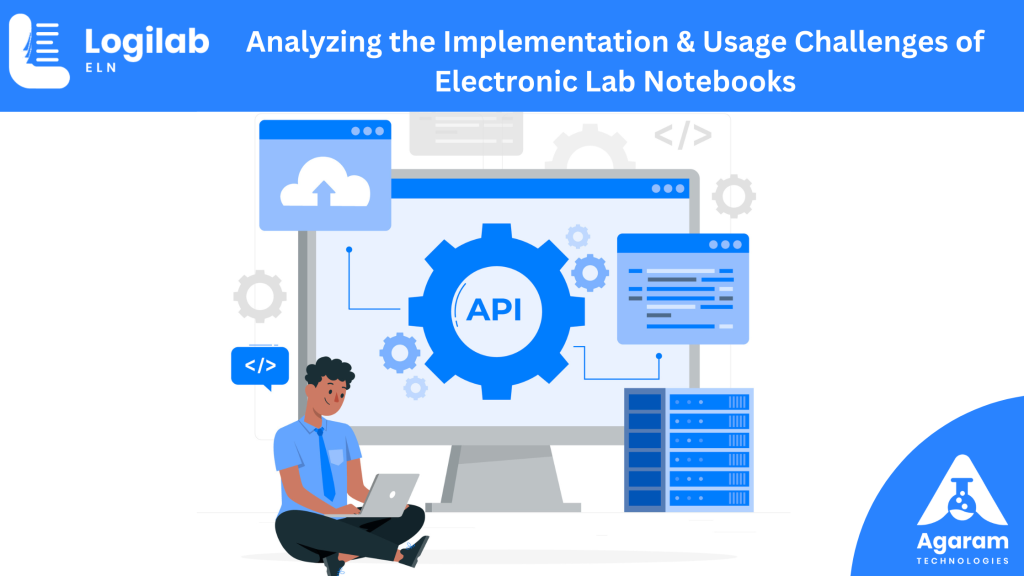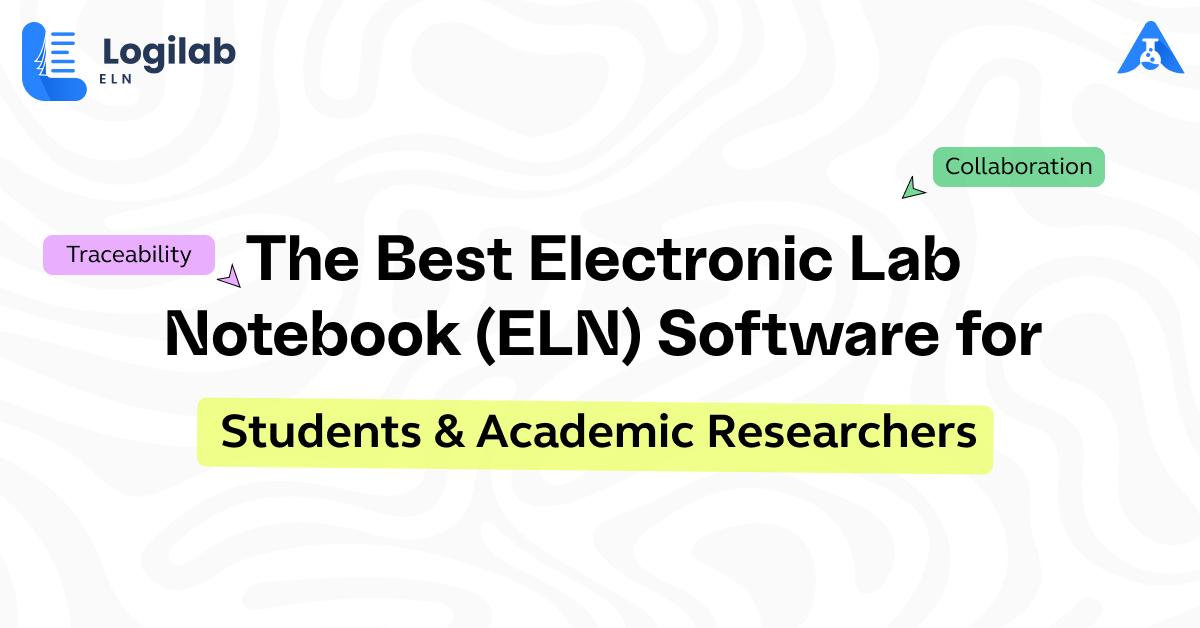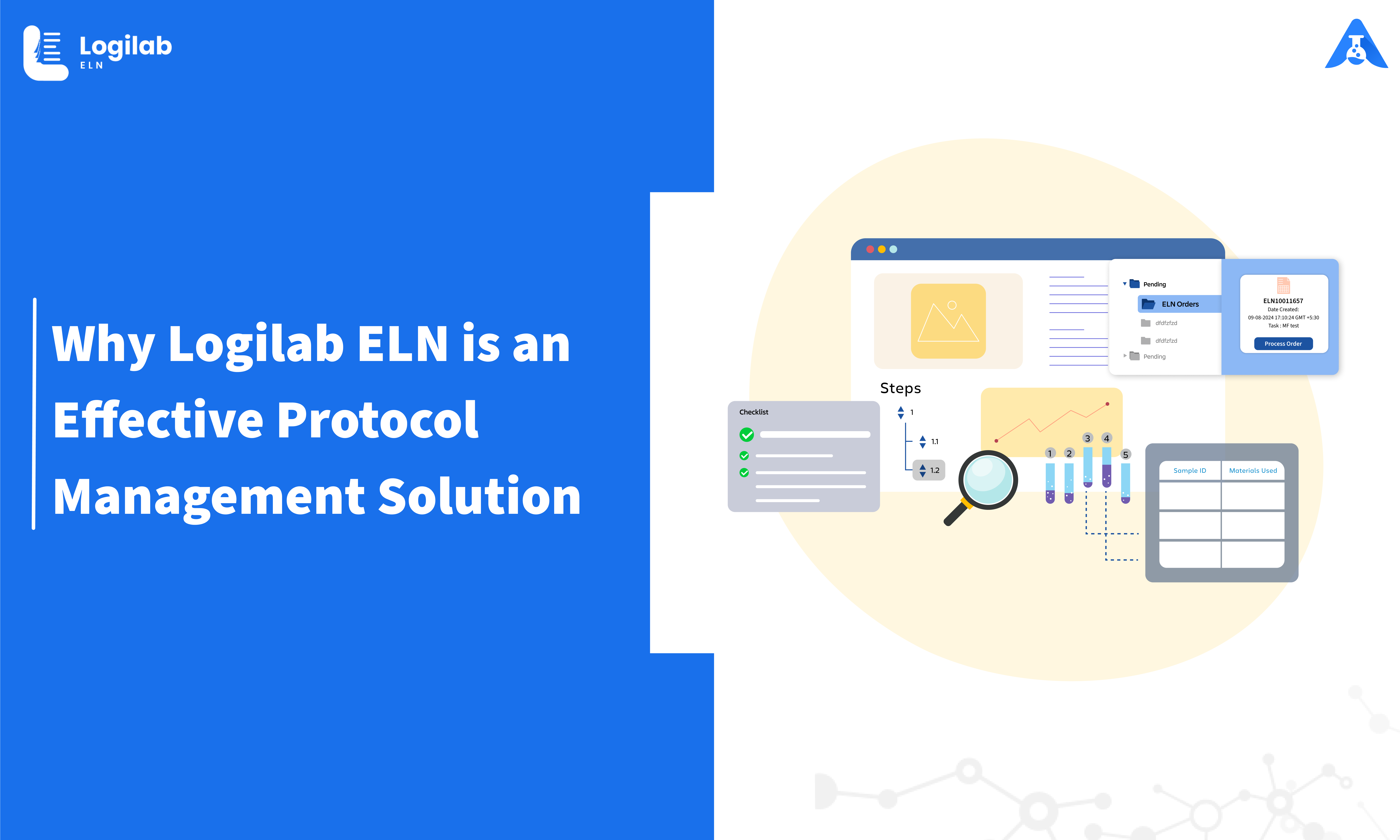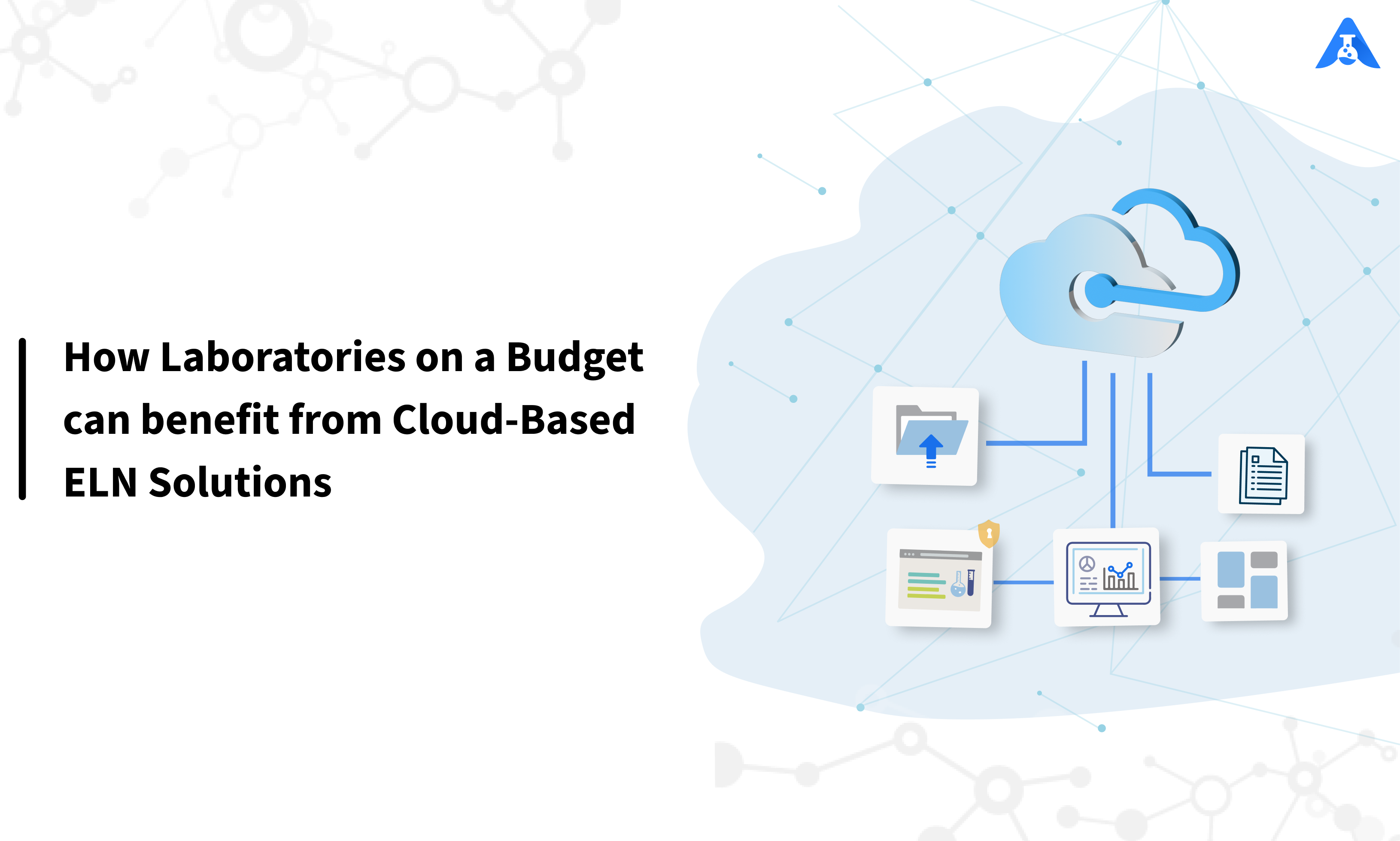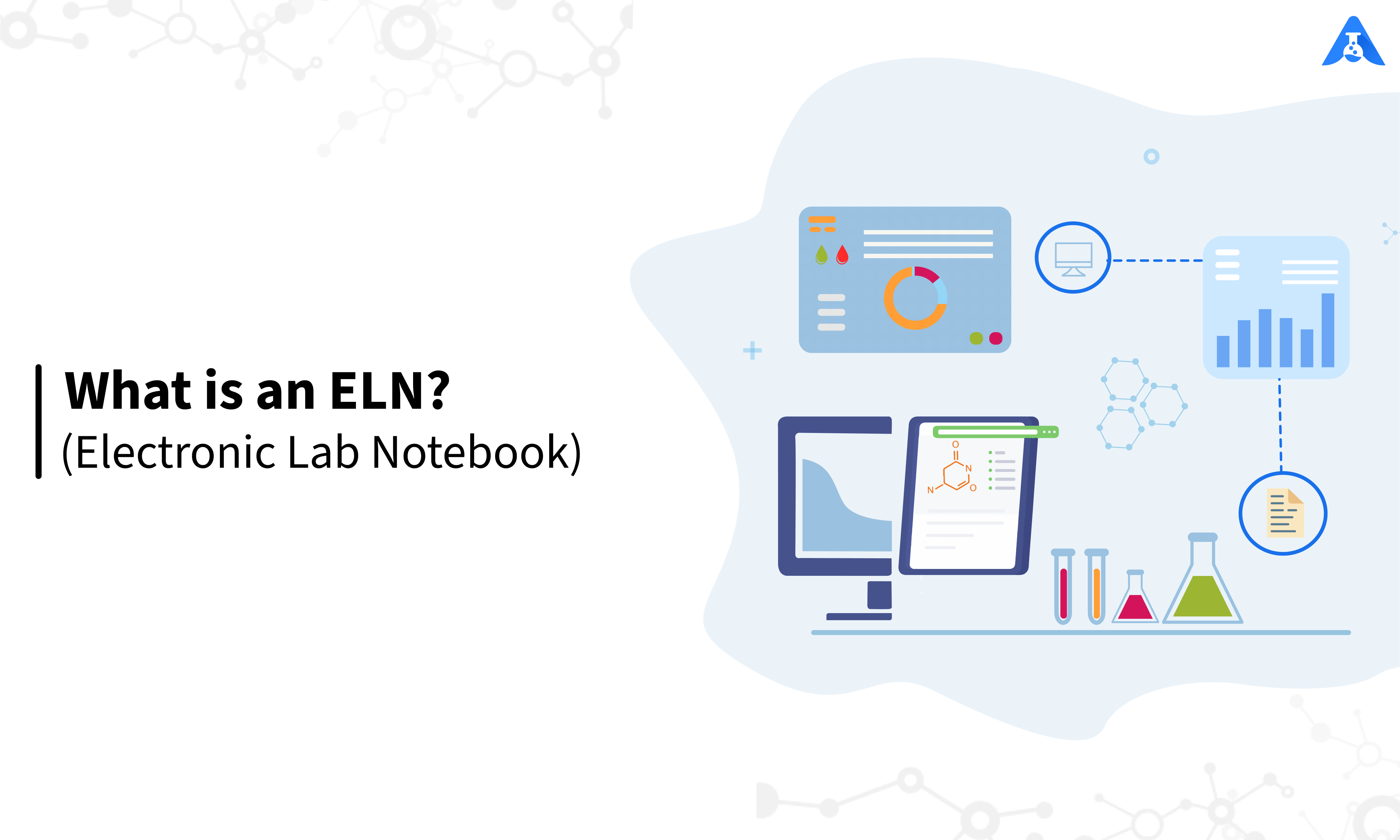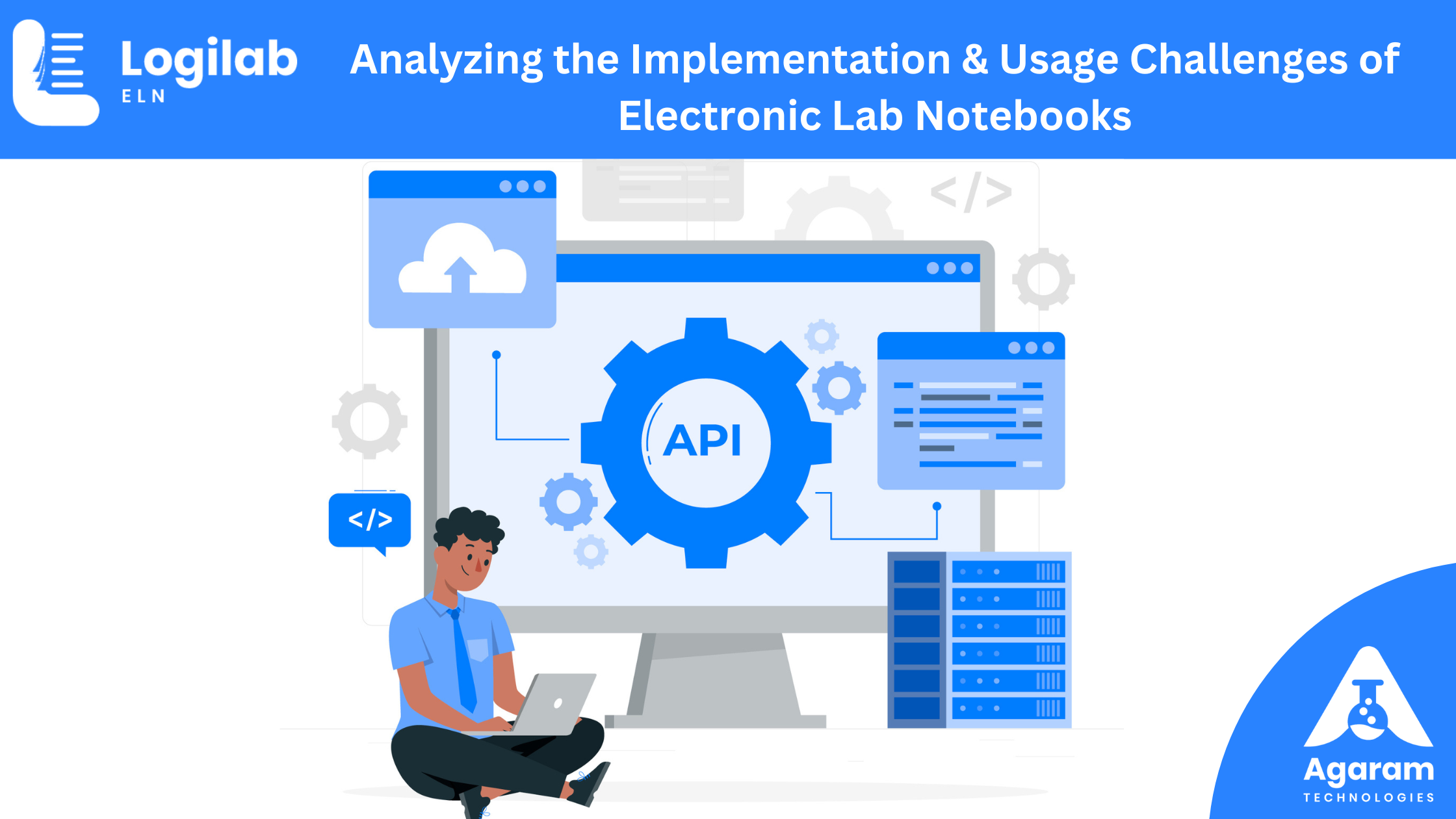The use of Electronic Laboratory Notebooks (ELN) is growing across the pharmaceutical, biotechnology, life sciences & healthcare sectors. Most studies indicate that there are numerous possibilities for a great upsurge in the demand and growth of the software in the years to come. A report by Grand View Research says that the global ELN market size will grow at a CAGR of 4.8% with a forecasted revenue of USD 768.2 million, by 2026.
ELNs brings lab users a user-friendly notebook system which can automate routine lab tasks such as data capture, inventory management & report generation to make their operations paperless & compliant. Once an ELN solution has been implemented, lab users can stop worrying about manual time-consuming work, focusing on high value activities instead.
ELN software systems have the potential to replace paper-based laboratory notebooks and legacy data capture solutions (e.g., Microsoft Excel) stored in various local computer systems. They also provide a greater value addition to researchers and analysts in terms of modernizing, centralizing, and simplifying record keeping activities in a laboratory. Loaded with an array of features like analytics, research data capture, dynamic reporting, among others, this solution will transform the way laboratories operate in the future.
As with implementing any new solution, using the Electronic Lab Notebook comes with a learning curve and a few challenges. While motivating your team to adopt the ELN solution for day-to-day use, there might be several external factors which you might want to consider beforehand to ensure a seamless and fast implementation.
To facilitate a smooth and efficient implementation, this blog post will list and explore the various challenges that enterprises might encounter when adopting an ELN. By carefully understanding and addressing these challenges beforehand, readers will be better equipped to optimize and shorten the overall implementation time, ensuring a seamless transition to an ELN solution and maximizing the benefits it offers to their research and data management processes.
Integration with lab instruments & existing ecosystem
Integrating ELNs with existing laboratory solutions and external software can be a complex undertaking. Many labs already have established data management systems, Laboratory Information Management Systems, or data analysis tools, CRMs & ERPs in place. Ensuring compatibility and smooth data transfer between these systems and the ELN is crucial for achieving a unified and efficient research environment. Ensuring that your ELN solution is capable of standardizing data formats and integrating with external applications via rest API services can help bridge the gap between different platforms, if required.
If your lab has a lot of instruments, integrating these would automate data capture and storage. To do this, your ELN solution must be capable of pulling data from Scientific Data Management Systems.
Database support
ELNs are designed to capture & handle vast amounts of diverse and complex data generated in research laboratories. The ELN must be compatible with various database systems that are already in use within the organization. The challenge arises when integrating the ELN with existing databases, as they might have different data structures, formats, and schemas. Data migration from legacy systems or other databases may require complex transformations and mapping processes to ensure data integrity and consistency. Additionally, performance issues can arise if the ELN does not efficiently handle the large volumes of data generated by multiple users. To address this challenge effectively, thorough planning, testing, and collaboration between the ELN vendor and the organization’s IT team are essential to achieve seamless database integration.
Data security & integrity concerns
Data integrity and security represent critical challenges during the implementation of an Electronic Lab Notebook (ELN) solution. Introducing and enhancing digitalization can escalate various security risks, evident from the dramatic increase in cyber-attacks and incidents in recent times. Financial and reputational risks stemming from data breaches can be substantial, with estimates suggesting losses of up to US$ 400 billion annually to hackers. Additionally, stringent data privacy regulations like GDPR and regulatory compliances such as 21 CFR Part 11 requirements need to be upheld to avoid costly penalties. Sharing data across multiple devices and granting access to numerous users, though advantageous for collaboration, raises concerns about data security and integrity. Potential risks include hacking threats and safeguarding intellectual property (IP). Addressing these challenges proactively is crucial to instill confidence in the ELN system and ensure the protection of valuable scientific data.
Implementation Duration
The time taken to deploy the ELN solution can impact overall productivity and research progress. Delays in implementation may lead to extended periods of parallel usage with paper-based systems, affecting data consistency and efficiency. A well-defined implementation plan, involving clear timelines, resource allocation, and collaboration between the ELN provider and the organization, can help optimize the implementation time. Equally important is user training, as the successful adoption of the ELN heavily relies on researchers’ proficiency with the platform. Comprehensive and tailored training sessions must be conducted to familiarize users with the system’s features, data entry processes, and collaboration tools. Adequate training not only ensures that users make the most of the ELN’s capabilities but also fosters a positive attitude towards the new digital environment, encouraging smoother and more enthusiastic adoption.
Overcoming the resistance to change
Researchers who have been accustomed to manual processes may view the introduction of new technology as disruptive and fear the learning curve involved. Addressing this resistance to change is crucial for successful ELN adoption. Effective communication and engagement with stakeholders are essential to highlight the benefits of the ELN, such as improved data accessibility, collaboration, and streamlined workflows. Providing comprehensive training and support to users, tailored to their specific needs, can help alleviate anxieties and build confidence in the new system. Additionally, involving researchers in the decision-making process and seeking their feedback during the implementation phase can empower them to embrace the change positively. By acknowledging and addressing the resistance to change, organizations can foster a culture of innovation and open-mindedness, ensuring a smoother and more successful transition to the ELN solution.
A well-anticipated challenge can be user resistance to change. As is widely known, culture eats strategy for breakfast. Therefore, it is of utmost importance to blend the cultural orientation of the lab with the change management on hand. An effort must be made to identify different stakeholders and address their concerns with specific change management strategies. Therefore, change management is an important aspect so that there is no undue resistance. Otherwise, this has the potential to unravel the entire planning.
Looking Ahead
In conclusion, the use of Electronic Laboratory Notebooks (ELNs) is on the rise across various sectors, and the market is projected to experience significant growth in the coming years. To ensure a seamless and successful implementation, careful planning, collaboration with IT teams, addressing security concerns, and providing comprehensive user training are essential. Moreover, organizations must recognize and manage resistance to change by engaging stakeholders and aligning the lab’s culture with the transition to ELNs.

